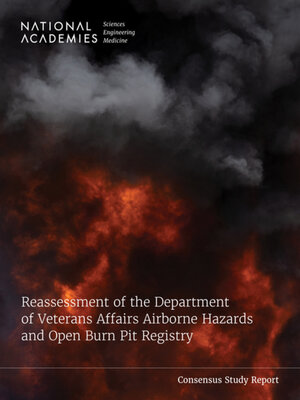Reassessment of the Department of Veterans Affairs Airborne Hazards and Open Burn Pit Registry
ebook
By National Academies of Sciences, Engineering, and Medicine

Sign up to save your library
With an OverDrive account, you can save your favorite libraries for at-a-glance information about availability. Find out more about OverDrive accounts.
Find this title in Libby, the library reading app by OverDrive.



Search for a digital library with this title
Title found at these libraries:
| Library Name | Distance |
|---|---|
| Loading... |
Beginning with the 1990–1991 Gulf War, more than 3.7 million U.S. service members have been deployed to Southwest Asia, where they have been exposed to a number of airborne hazards, including oil-well fire smoke, emissions from open burn pits, dust and sand, diesel exhaust, and poor-quality ambient air. Many service members, particularly those who served in Iraq and Afghanistan, have reported health problems they attribute to their exposure to emissions from open-air burn pits on military installations.
In 2013, Congress directed the Department of Veterans Affairs (VA) to establish and maintain the Airborne Hazards and Open Burn Pit (AH&OBP) Registry to "ascertain and monitor" the health effects of such exposures. This report serves as a follow-up to an initial assessment of the AH&OBP Registry completed by an independent committee of the National Academies in 2017. This reassessment does not include any strength-of-the-evidence assessments of potential relationships between exposures to burn pits or airborne hazards and health effects. Rather, this report assesses the ability of the registry to fulfill the intended purposes that Congress and VA have specified for it.







